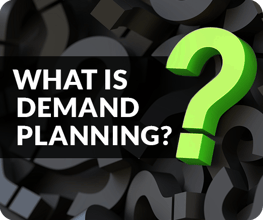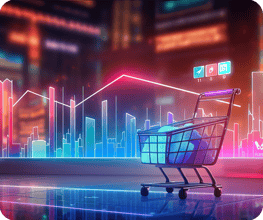
Demand forecasting is the process of using predictive analysis techniques to analyze historical and current retail sales data to estimate and predict future demand for a product or service over a period of time. Demand forecasting helps CPGs make more-informed, crucial supply chain and inventory management decisions to optimize efficiencies and profitability. It is a critical component of successful demand planning and the supply chain management process.
Accurate and effective demand forecasting can be a game-changer for CPGs—not only in helping adequately meet consumer demand but also in assisting in properly allocating resources and implementing planning strategies to capitalize on sales opportunities and gain market share.
Demand forecasting is a broad topic, one that is often confusing and that can have a different definition depending on whom you ask. However, at its core, demand forecasting is fundamentally about predicting which product or products consumers will want, how much, when, and where.
Demand Forecasting vs. Demand Planning
If you are familiar with supply chain management and sales and operations planning, you have heard the term “demand planning” and heard it used in conjunction with “demand forecasting.” Although the terms are often used interchangeably and have some overlap, they are two different processes that serve different purposes.
While demand forecasting is the process of predicting consumer demand for products, demand planning uses the demand forecast as a foundation to determine a comprehensive plan to fulfill and meet sales expectations—one that ensures capacity is available, raw material orders are placed, inventory levels are optimized for the anticipated production rates, and delivery of materials and finished goods can be accomplished in the appropriate order. If you know how much demand a product will have at a specific time, price point, and retailer, you will have a better idea of how to stock to maximize sales and minimize costs.
Benefits of Demand Forecasting
Without consumer demand, there is no business, no sales, and no revenue. And although no demand forecast will ever be 100% accurate, there are many benefits of solid demand forecasting. One of the most significant is that it improves your bottom line while maximizing profit. Having accurate predictions of consumer demand plays an integral role in determining how much inventory a product should have at any given retailer. Overstock can be a costly issue for both retailers and CPG suppliers, as are out-of-stocks and rush retail replenishment, so it’s best to have an accurate forecast in the first place.
Demand forecasting is important for CPGs because identifying the expected demand for your product(s) means all business units can adequately prepare. Demand forecasts don’t need to be perfect to impact your business decisions positively—just knowing if demand will go down a lot, up a lot, or stay about the same gives businesses time to collaborate, plan, and prepare appropriately.
How to Forecast Demand
- Identify your forecast goals and parameters
- Determine available information and sources
- Collect data related to potential sales
- Apply forecasting methods to data
- Analyze and assess your results
- Track your results and look for areas of improvement



